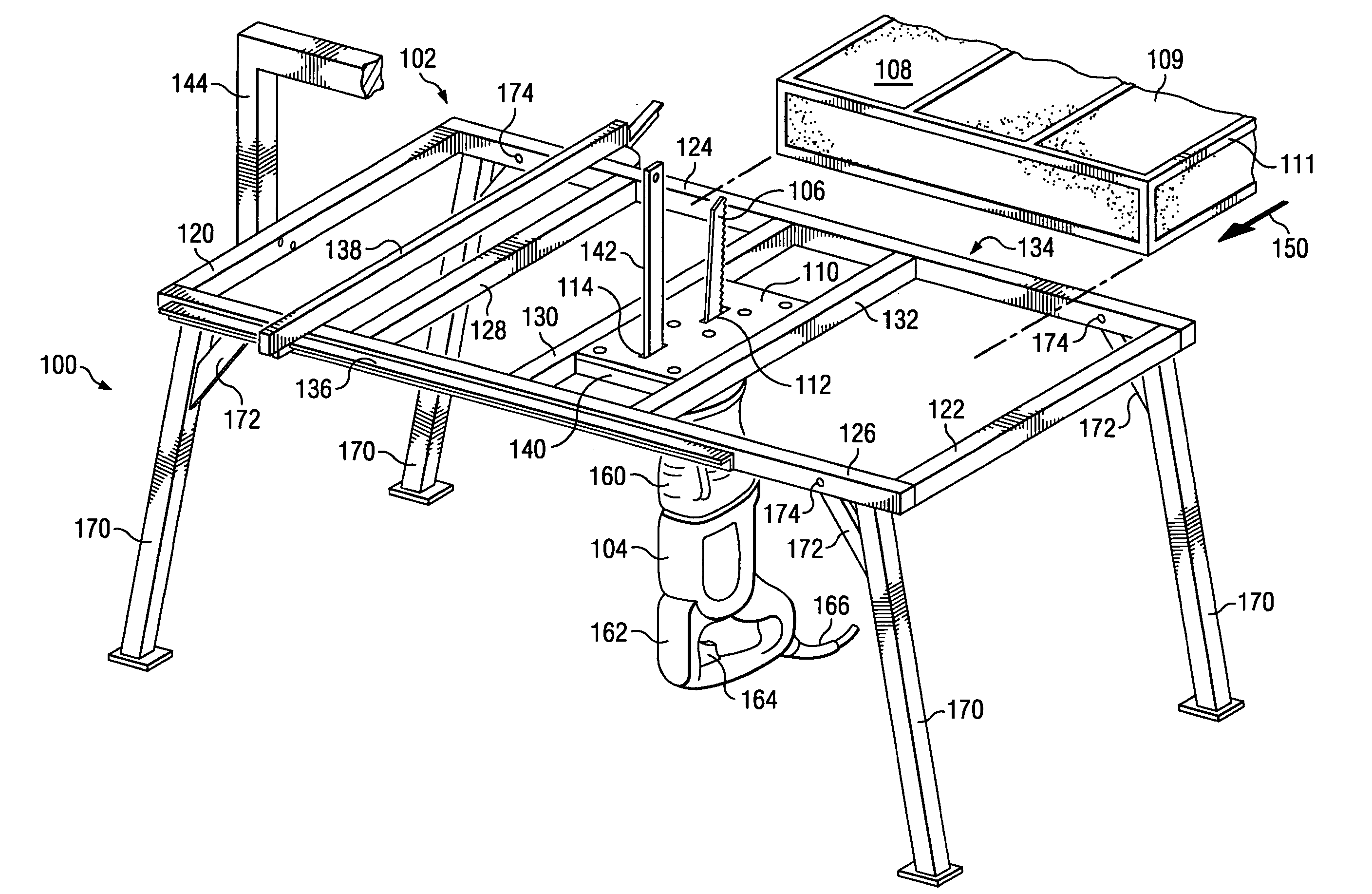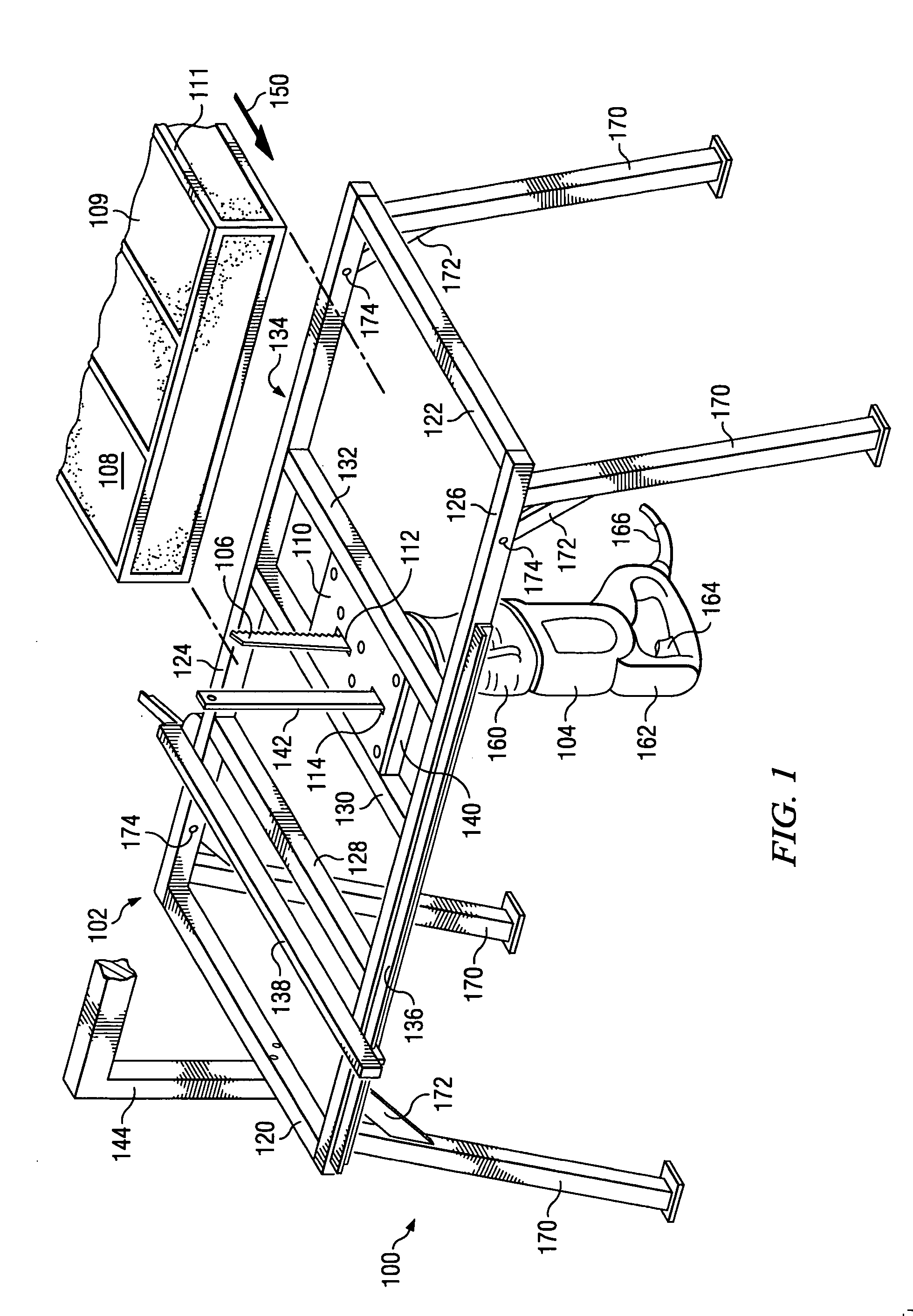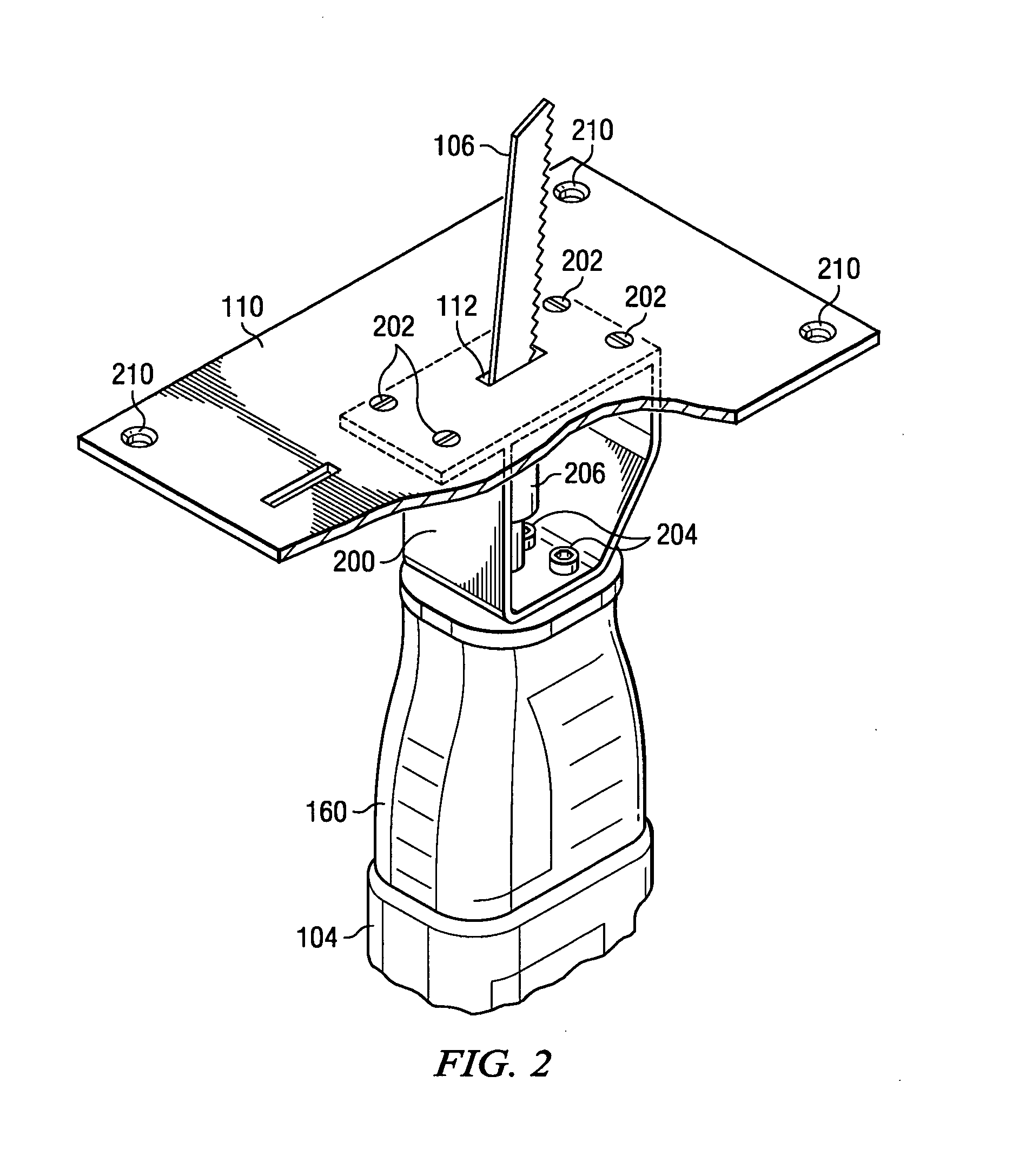Reciprocating table saw
a table saw and reciprocating technology, applied in the field of power tools, can solve the problems of slow hand saws, unsuitable for construction site use, laborious and labor-intensive circular saws, and inability to make long, accurate cuts in large panels, and achieve the effect of limiting sideways displacemen
- Summary
- Abstract
- Description
- Claims
- Application Information
AI Technical Summary
Benefits of technology
Problems solved by technology
Method used
Image
Examples
Embodiment Construction
[0018] The powered reciprocating table saw of the present invention, while designed for cutting large foam / steel insulated building panels, embodies a versatility beyond that particular application because it functions much like a large band saw having the capacity for sawing large work pieces, and it may be used as a table saw that can saw curved cuts in a wide variety of materials. Unlike a conventional band saw, it is designed to be portable and easily set up on a work site. A pilot hole is not required as is necessary with a band saw when making inside cuts. It is safer to use than a table saw because the blade does not tend to pull the work piece into the blade. Although the preferred embodiment is constructed of aluminum for light weight, it is easy to construct from a variety of materials, and may be configured with folding legs or supported on saw horses at the work site. It will also be appreciated that the invention is not limited to a particular brand or type of reciproca...
PUM
| Property | Measurement | Unit |
|---|---|---|
| angle | aaaaa | aaaaa |
| angle of reciprocation | aaaaa | aaaaa |
| angle | aaaaa | aaaaa |
Abstract
Description
Claims
Application Information
 Login to View More
Login to View More - R&D
- Intellectual Property
- Life Sciences
- Materials
- Tech Scout
- Unparalleled Data Quality
- Higher Quality Content
- 60% Fewer Hallucinations
Browse by: Latest US Patents, China's latest patents, Technical Efficacy Thesaurus, Application Domain, Technology Topic, Popular Technical Reports.
© 2025 PatSnap. All rights reserved.Legal|Privacy policy|Modern Slavery Act Transparency Statement|Sitemap|About US| Contact US: help@patsnap.com



